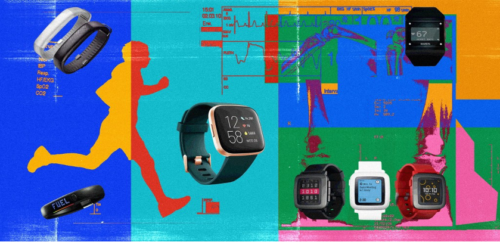What if my Smartwatch was hacked? Should I care?
With the latest generation of high-tech wearables, the functionality seems to be growing exponentially. Fitness trackers like FitBit have upped their game and moved into becoming watches while they’ve also expanded their product lines to connect with peripheral and related data collection devices such as weight scales. Coming from the other direction, traditional watchmakers have expanded into the digital world and now offer connected devices that sync up with your smartphone. Wristbands and rings can now monitor your sleep to tell you your resting heart rate and the type of sleep you’re getting. Premium fitness and GPS trackers such as Garmin can tell you if you should rest or your body is ready for a hard workout for the day.

With all of these capabilities, it’s easy to be overwhelmed when it comes to testing. Are these hardware or software? Well, they’re both. Not only embedded software, but software (usually on your smartphone) that interacts with the embedded software and hardware. Where to begin from a QA standpoint? Usability, data integration, and perhaps most importantly, security/privacy would be at the top of our test plan and strategy!
Usability:
If your end users can’t figure out how to get the most out of their device, from their point of view (whoever they are), then that’s a show-stopper. They won’t use it, nor will they say good things about it to their friends. Figure out what the top tasks or data items that your users want to do or see and optimize for that. Give them self-configurable options while collecting data on how they use it so you can use it as input to your next version’s default settings.
Data Integration:
With so many moving parts, data going from here to there, how do you test the flux of data, it’s timing, and accuracy. Perhaps even more important is managing the security of such data from one platform to another.
Security and Privacy:
Lastly, and perhaps most importantly to many is the concern for privacy. Accessing the wearable’s data from a single app or multiple apps that are integrated together will entail many user scenarios so it’s not just as simple as a user ID and password.
With all the convenience and being able to understand what your body and exercise metrics are at any given time, is it worth the price? What personal data is being collected to support all the “coolness” and capabilities? Are wearables Big Data secure?
Wearables collect an amazing amount of personal data. For example, below are a few of the tasks an Apple Watch can perform and the associated data that’s collected:
Smartwatch Wearable Activities – Big Data Collected
Task
- Make/receive a phone call
- Send/receive a text message
- Review calendar
- Chat (Skype and others)
- Track package from UPS
- Receive an invitation to connect on LinkedIn
- Fitness goal achieved
- Track running/exercising/walking
- Look at heart rate
Data Used/Collected
- Phone numbers and time called
- Time of message, and content
- Itinerary of all appointments
- Contacts and chat content
- Destination of package and sender
- LinkedIn account info
- How long I was standing or exercising
- Geo-location
- Health statistics
For the convenience that our digital lives and the pleasure wearable gadgets give us, we pay the high price in the potential of lost personal privacy. The thing is, wearable sensors are collecting vast amounts of personal data, some of which we are aware of, some we would be surprised to know, and most likely some that we don’t know. What’s even more crazy is that wearables are connected to your mobile smartphone, opening up its data not only other apps, but potentially anyone who can access data on your smartphone, not just the wearable device itself.
Wearables aren’t just for geeks anymore. As a user, it wouldn’t hurt to think about what benefits do you get from them other than the novelty of knowing a little more information about how many steps you did in a day or what your average heart beat is. When you expose significant quantities of personal data to a company (or hacker), we always advise to take the 5 mins or so to read their privacy statement thoroughly. Who spends the time to read those? Awareness of the privacy and security of data associated with device usage will be helpful in determining how important for you the added functionality is for you versus the privacy of your data and determining if the risks associated with certain wearables is worth it. If you have heart issues and have your electrocardiogram sent automatically to your cardiologist every 10 minutes, that’s probably a good thing, but what other use cases would you consider important?

Leave A Comment